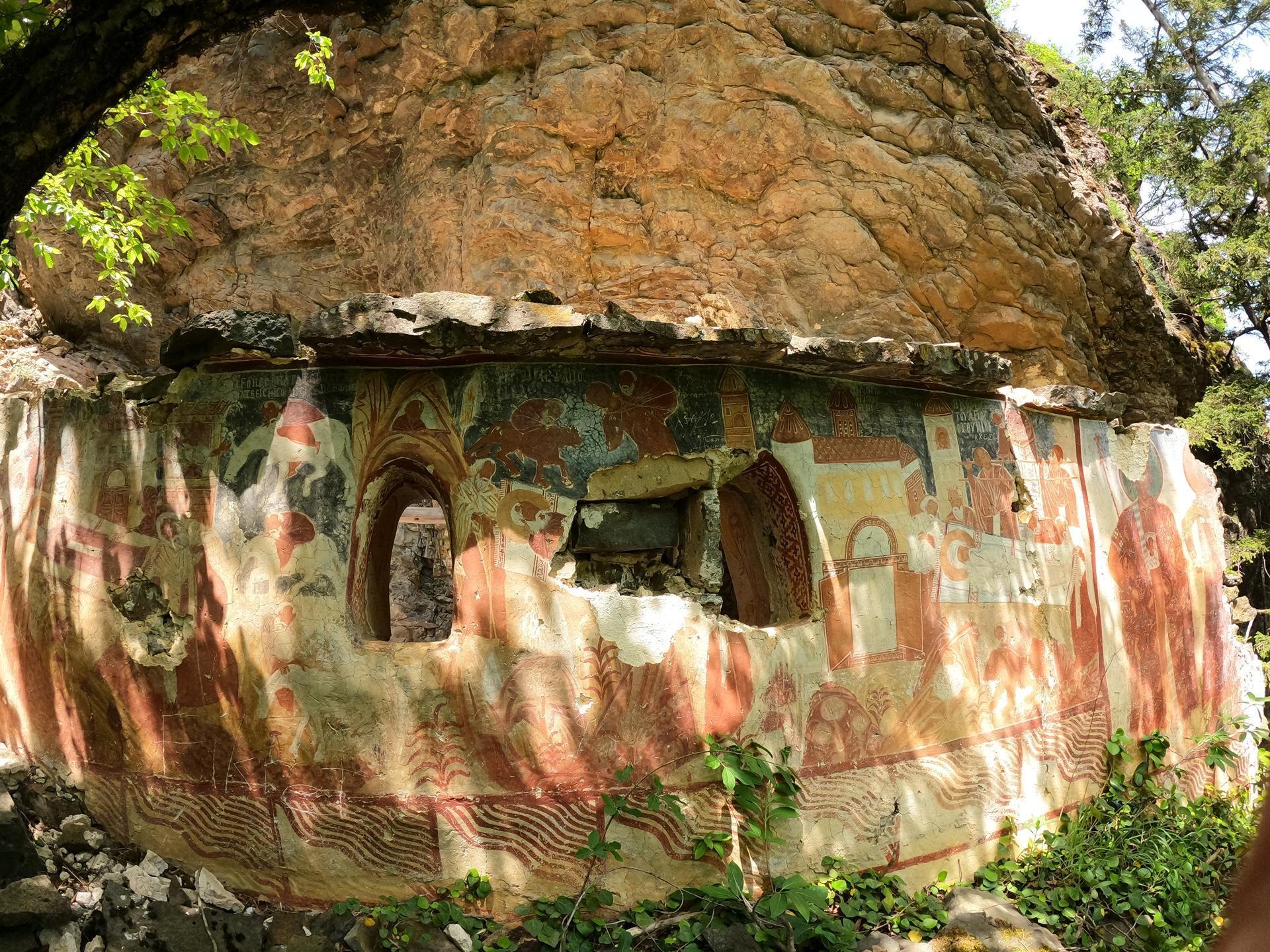'Hidden chapel' in Sümela Monastery to be restored
TRABZON

In line with a project, a “hidden chapel” unearthed during the restoration of the Sümela Monastery, one of Turkey’s religious tourism centers in the northern province of Trabzon, will be revived.
The single-nave chapel, the walls of which are embellished with frescos resembling the walls of the bedrock church in the Sümela Monastery, was registered as the “first group cultural property to be protected” in 2018.
The Sümela Monastery, which was built by carving rocks in a forest area 300 meters above the valley at the foot of Karadağ Mountain, which is overlooking Altındere Valley in Maçka district, was closed to visitors in September 2015 against the risk of rockfall and was taken under restoration.
The first stage of the restoration works, with a cost of approximately 50 million Turkish Liras and carried out by the Culture and Tourism Ministry, included the reinforcement of rocks and outer courtyard and environmental arrangement.
Within the scope of the second phase of works, the temporary reinforcement of the rock mass called the “wedge block” located above the main entrance of the monastery was completed.
In the third phase of the restoration, approximately 70 personnel, including engineers and industrial mountaineers, continued works for permanently fixing the wedge block rock mass to prevent any rockfall.
Shortly after restoration works began on the monastery, which is a first-degree archaeological site, restoration teams discovered a new chapel in the rocky area above the monastery.
The chapel, also known as the “hidden chapel” because it is located in the rocky area, can be reached by climbing the rocky area from the roof of the northern part of the Sümela Monastery and crossing a path of approximately 50 meters.
Speaking to the state-run Anadolu Agency, Provincial Culture and Tourism Deputy Director Mustafa Asan said that the entrance of the single-nave small chapel and the facade of this section were completely in ruins. He noted that there were no frescoes or decorative elements in the southern part, that the stone-paved top cover was placed on the bedrock and the chapel, which was covered with a barrel vault from the inside, was supported by bonding timbers.

Stating that the apse section on the east side of the chapel, which is illuminated by two windows in the northern section, is one of the parts that have not survived, Asan said: “Various scenes from the Bible were processed on many parts of the chapel, including the entire northern facade of the chapel’s exterior, the surviving walls of the western part and the side surfaces of the window openings. The frescoes on the walls of the chapel show the same characteristics as the frescoes adorning the walls of the bedrock church in the Sümela Monastery.”
Asan noted that according to a piece of information, all the surfaces of Sümela were decorated with frescoes by an archbishop named Ignatios in 1749, adding “It is possible that the construction date of the chapel is the first half of the 18th century since the frescoes in this chapel show similar characteristics in style. Although the frescoes are damaged in some places, they have survived to the present day.”
Stating that a project has been prepared within the scope of the restoration of the hidden chapel, Asan said: “We are planning to bring the chapel in tourism after the studies to be carried out by the relevant institutions of the ministry. A wooden road will be built to exit the pathway. Works on the restoration and survey of the chapel will be carried out soon.”
















